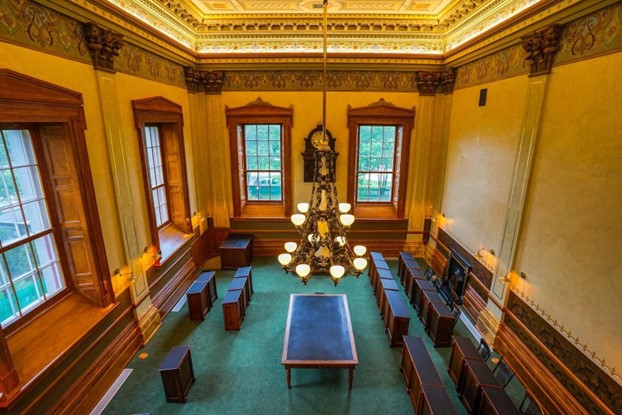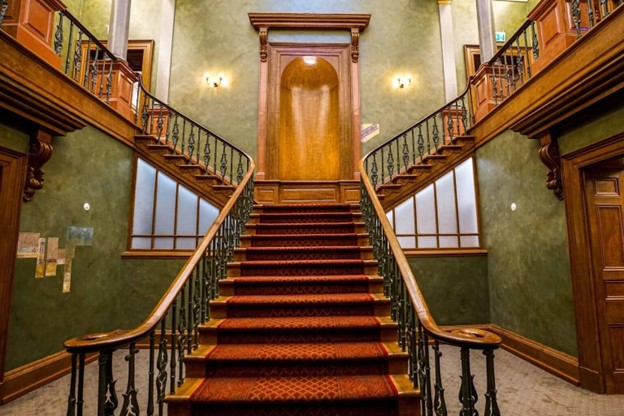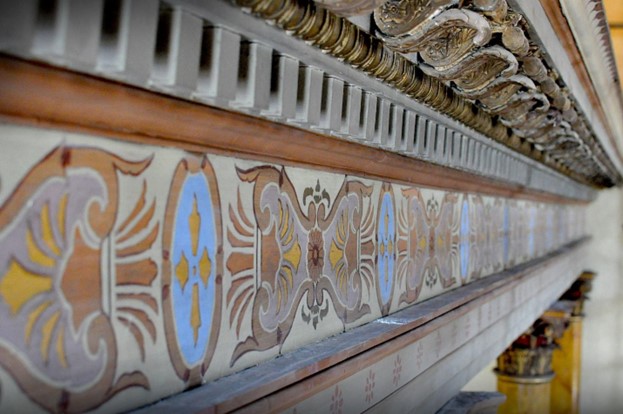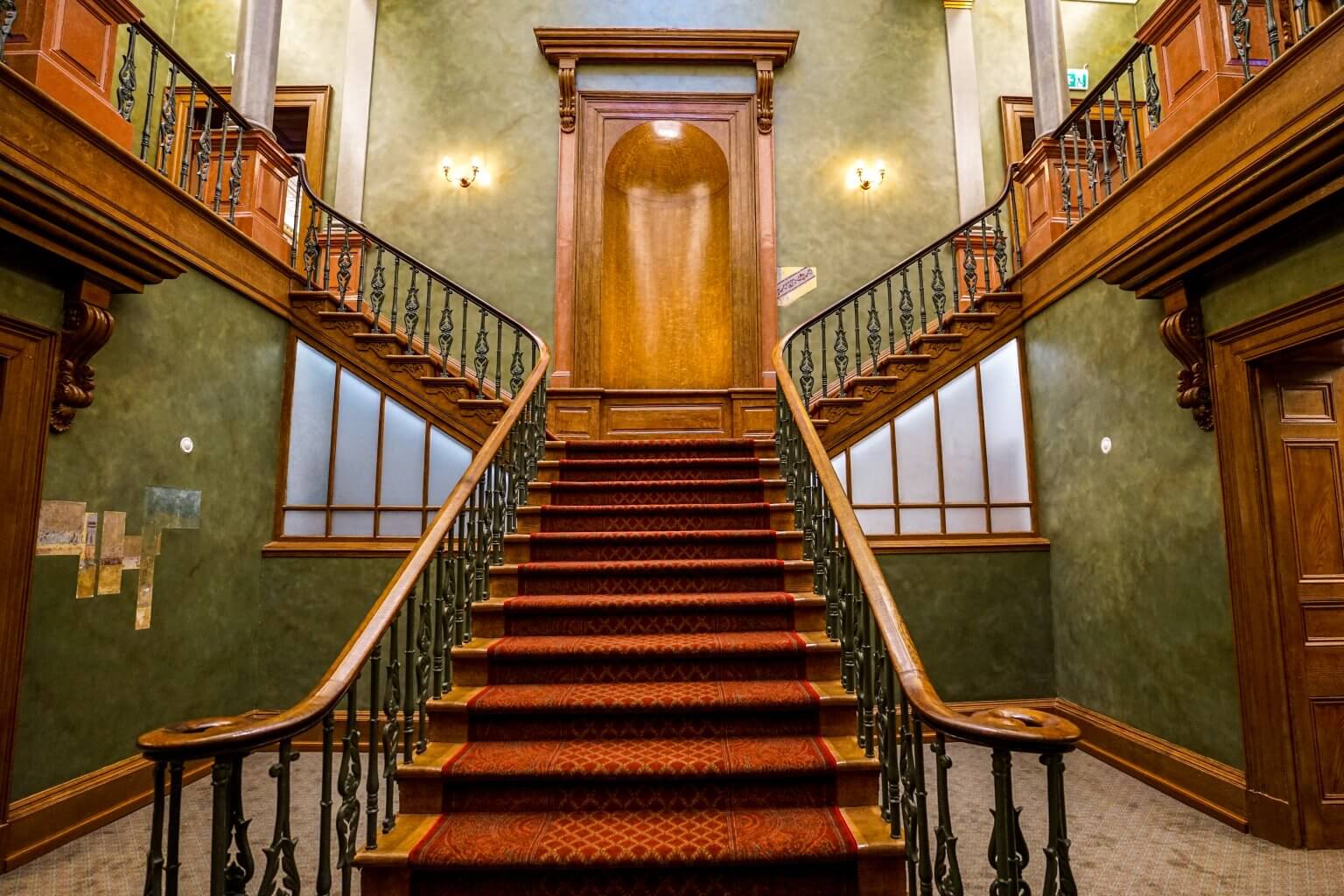Reviving History: The Reopening of St. John’s Colonial Building
In 2022, St. John’s, the historic capital city of Newfoundland and Labrador, welcomed back visitors to the Colonial Building after a decade-long conservation project.

Newly restored Colonial Building in St. John’s after a decade-long construction process. Photo: Newfoundland & Labrador, Provincial Historic Sites
The building was home to the Newfoundland and Labrador Legislative Assembly from 1850 until 1959. Featuring a neoclassical facade with a portico, ionic columns, and a large triangular pediment, the building was constructed using white limestone imported from Cork, Ireland, at considerable expense. The interior of the building was also finished with an eye to style and features two legislative chambers that once housed the elected legislative assembly and the appointed legislative council.

Legislative Assembly room. Photo: Newfoundland & Labrador, Provincial Historic Sites
With 30-foot ceiling rooms, there is no shortage of intricate designs to take in. Throughout the chandeliers are some of the last of their kind and once held gas lanterns. This building was the first to have electricity in Newfoundland.

A grand wooden staircase in the center of the Colonial Building. Photo: Newfoundland & Labrador, Provincial Historic Sites
After decades of underuse and limited investment, the restoration effort required meticulous attention to detail, with experts working to repair and recreate original features such as intricate stonework, a grand wooden staircase, and ornate plaster ceilings.
Fresh Colours – Fresh Eyes

Beautifully restored frieze. Photo: Newfoundland & Labrador, Provincial Historic Sites
“The neat thing about the restoration was … we all knew the paint schemes because of the mockups, but when you are actually in the space it was amazing to look at them because no one living has ever seen it this way,” says Christopher Martin, Historic Sites Officer at the Department of Tourism, Culture, Arts and Recreation. “The colours have been gone since the 20’s when it was painted gray”.
The Provincial Archives of Newfoundland and Labrador, and various other non-profit heritage groups have used the building since 1959 when the legislature met inside its walls for the last time.
Renaming the Colonial Building?
Before the reopening of the Colonial Building to the public, the provincial Tourism Department raised the possibility of a name change “as part of ongoing efforts in support of Indigenous reconciliation.” Yet after public consultation, they made a statement that the name would remain unchanged.
According to the Tourism Department, 69 per cent of respondents said the name should remain in place. Another 26 per cent of respondents were in favour of a name change, with “Parliament House” earning 40 per cent of those votes. (Newfoundland & Labrador press release, https://www.gov.nl.ca/releases/2022/exec/0815n01/ )
After the decision by the provincial government to not rename the building, two Indigenous groups, the Nunatsiavut government, which represents Inuit in Labrador, and First Voice, an Indigenous coalition in St. John’s, issued statements expressing their disappointment.
Open for Tours or Explore on Your Own
The Colonial Building is open for the summer season Monday to Friday, 9:30 am – 5:00 pm. Visitors can join an interpreter for a guided tour or explore on their own, with guided tours available throughout the day.
The St. John’s Colonial Building is part of the Trust’s Passport Places program, a National Trust membership benefit that provides free access to 100 historic places in Canada, as well as 1000+ National Trust places abroad. Become a member today!


